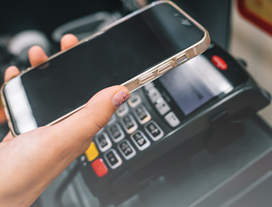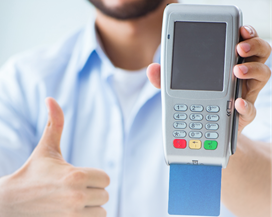
What is a Point-of-Sale System? Costs and Features Explained | Understanding POS Systems
A point-of-sale (POS) system is a tool that enables businesses to process sales, track inventory, manage payments and analyze customer transactions.

A Point of Sale (POS) system is a combination of software and hardware that allows businesses to conduct sales transactions seamlessly. However, it's much more than just a modern cash register. A comprehensive POS system manages inventory, tracks sales, processes payments, and provides valuable insights into customer behaviour.
The first step in leveraging a POS system is choosing the right one for your business. This decision should be informed by your specific needs, such as the type of products or services you offer, the size of your business, and your budget.
As a Canadian payment processing company, Moneris offers scalable POS systems designed specifically for Canadian retailers. These systems cater to various types of businesses and their unique needs. They also offer a range of payment options, such as credit and debit cards, contactless payments, and mobile wallet payments, ensuring that your business stays ahead of the competition and remains responsive to the evolving market.
Using a Point of Sale (POS) system effectively involves several steps, from initial setup to daily operations. Here’s a comprehensive guide on how to use a POS system, broken down into clear, actionable steps.
To start using your POS system, you need to install and launch the software. For cloud-based systems, download the app onto your device and connect it to the internet. On-premise systems require installation on your local server or computer. Once installed, launch the software and log in using your credentials, entering your business details such as store name, location, and other relevant information.
Next, set up the necessary hardware components. This includes connecting the POS terminal, cash drawer, receipt printer, barcode scanner, and card reader. Ensure each device is plugged into a power source and turned on. Pair these devices with your POS software, either via Bluetooth or your store’s WiFi network.
Configuring your POS system involves setting up account settings and user permissions. Go to the settings menu to configure tax rates, payment methods, and receipt formats. Create user accounts for your employees and assign appropriate permissions to manage access levels and track employee activities.
Training your staff is essential for smooth operations. Begin by teaching them how to perform basic operations like ringing up sales, processing returns, and handling different payment methods. Additionally, ensure they understand advanced features such as inventory management, sales reporting, and customer relationship management (CRM). It's also important to provide basic troubleshooting training to handle common issues like hardware malfunctions or software glitches.
Managing your inventory efficiently helps in avoiding stockouts and overstocking. Use your POS system to keep track of your inventory in real-time. Configure the system to alert you when stock levels fall below a certain threshold, ensuring you never run out of popular items.
Enhancing the customer experience can significantly benefit your business. Use the POS system to create and manage customer loyalty programs, tracking points earned and redeemed by customers. Collect customer data during transactions and use it to send personalized marketing messages and promotions.
Regular maintenance and updates are crucial for keeping your POS system running smoothly. Keep your POS software updated to benefit from the latest features and security patches. Implement strong security measures to protect customer data, including using secure passwords, encrypting data, and regularly backing up your system.
By following these steps, you can ensure that your POS system is set up correctly and used effectively to streamline your business operations, improve efficiency, and enhance customer satisfaction.
Integrating a POS system into your business operations can seem daunting, but it's a step that can significantly improve efficiency and customer satisfaction. Here are a few tips on how to make this transition smoother:
Understanding how to use POS systems in Winnipeg is crucial for businesses looking to stay competitive and meet customer expectations. By choosing the right system, setting it up correctly, and integrating it into your business operations, you can unlock a host of benefits, from improved efficiency to enhanced customer satisfaction.
Remember, the goal of implementing a POS system is not just to keep up with technology but to leverage it in a way that grows your business and builds lasting relationships with your customers. With the right approach and support from a trusted provider like Moneris, you can achieve just that.

A point-of-sale (POS) system is a tool that enables businesses to process sales, track inventory, manage payments and analyze customer transactions.

Contactless payment for restaurants offers speed, security and convenience. Learn how tap-to-pay technology improves efficiency and enhances the dining experience.

Learn how to choose the best POS system for your small business. Explore essential features and tips for payment processing and inventory management.

Learn how to process payments online with this comprehensive guide for Canadian businesses. Explore secure, efficient payment processing solutions, and gain insights into integrating and optimizing payment systems to meet customer needs.